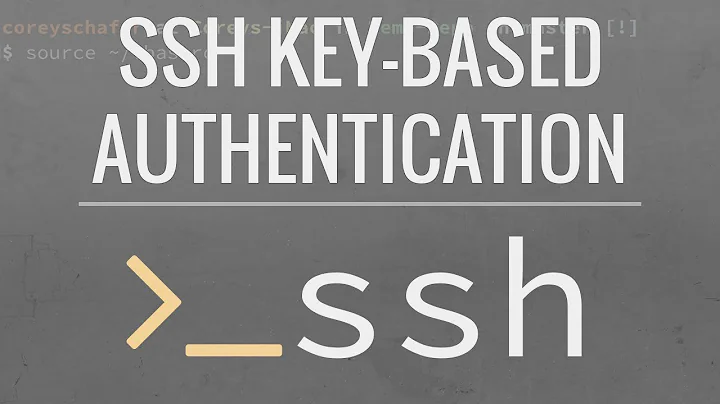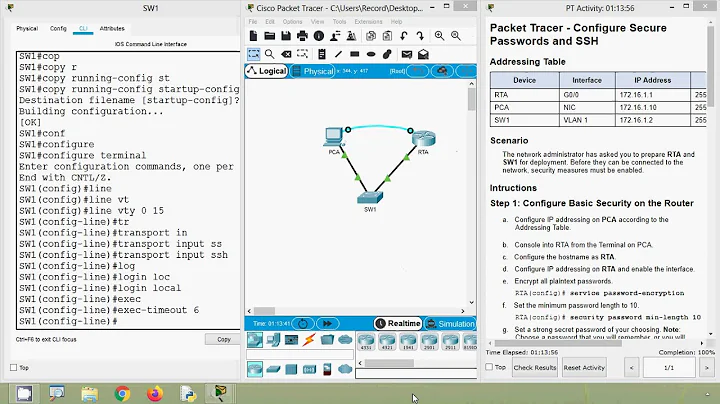SSH makes all typed passwords visible when command is provided as an argument to the SSH command
Solution 1
If you provide a remote command to run, SSH doesn't allocate a tty, so the remote command is unable to disable echo. You can force SSH to provide a tty using the -t option:
ssh -t user@server 'mysql -u user -p'
The equivalent option (for -o or for config file) is RequestTTY. I'd caution against using it in config because it can have unwanted effects for non-interactive commands.
Solution 2
Storing the password in a protected option file
If you can trust [*] the remote computer's security, you can store the password in a properly protected option file, as suggested in the End-User Guidelines for Password Security chapter of the manual, without the need to communicate through ssh or to type each time.
Specifically you can add a line in the [client] section of the file .my.cnf in your home directory:
[client]
password=your_pass
Of course you have to keep that file from being accessible to anyone but yourself, by setting the file access mode to 400 or 600 with, e.g.
chmod 600 ~/.my.cnf
Then you can use something like
ssh user@server 'mysql -u user110971 --defaults-file=/home/user110971/mysql-opts'
where user110971 is the username of your account.
Forcing the ssh to allocate a pseudo tty (ssh -t)
This problem happens each time that you send a command through ssh and you need to insert the input because, by default, ssh will not allocate a pseudo-tty.
You can force the tty allocation with the option -t, (even more than one if needed):
-tForce pseudo-tty allocation. This can be used to execute arbitrary screen-based programs on a remote machine, which can be very useful, e.g. when implementing menu services. Multiple
-toptions force tty allocation, even if ssh has no local tty.
As you can read in this Debian post (Jul_11_2008) about sudo, it is an old issue that loves to recur:
ssh user@server "sudo ls" password: passwordAnd password is shown you
The solution is to force ssh to allocate a pseudo-tty, with the -t flag:
ssh -t user@server sudo ls
Note:
[*] If you can rely on leaving the password in a file accessible only by you and root on the working client.
If it is possible to reboot the remote computer changing OS or to remove the HDD, the computer can't be considered completely secure... but in that case the database itself will not be secure.
Solution 3
Mount option "hidepid" for proc fs is also valuable. It makes your commandlines invisible in process list for other users. fstab example:
proc /proc proc hidepid=1 0 0
Related videos on Youtube
user110971
Updated on September 18, 2022Comments
-
user110971 over 1 year
If I run this:
ssh user@server 'mysql -u user -p'When it asks me for the MySQL password, and I start typing, the password is visible on screen. How can I prevent this? If I log in through
sshand then execute the MySQL command, everything works fine.-
barlop over 7 yearsdon't you think that title is rather unclear.. You could say it makes all text including passwords visible. And how is ssh meant to know what what you're typing is a password vs some other command or data?
-
user110971 over 7 years@barlop I'm open to suggestions.
-
user110971 over 7 years@barlop well it works when you execute the command once you ssh to the server. I'm looking for some way to make the ssh behavior the same when the commands are provided as an argument.
-
barlop over 7 yearsit's probably not that necessary, but can you include a full copy/pasted example from the console e.g. showing not just the ssh command but the response, and the mysql prompt that follows. You can change the password to swisscheese so as not to put it on the site I can't test it at the moment
-
user110971 over 7 years@barlop It's just the same messages you would expect i.e. ssh password followed by MySQL password prompts
-
 Stavr00 over 7 yearsWould it be possible to use key-pair authentication? This way, no password is used.
Stavr00 over 7 yearsWould it be possible to use key-pair authentication? This way, no password is used. -
user110971 over 7 years@Stavr00 for MySQL? You'd need to use a key for everything that needs a password. The -t switch actually fixes the problem.
-
 Stavr00 over 7 years
Stavr00 over 7 years
-
-
 user over 7 yearsOr you can edit ~/.ssh/config to configure that specific host to always request a TTY. See
user over 7 yearsOr you can edit ~/.ssh/config to configure that specific host to always request a TTY. SeeRequestTTYinman 5 ssh_config. -
Olivier Dulac over 7 years@MichaelKjörling (and Toby) : maybe add a bit of warning that adding "-t" should be reserved to interactive usage only, as it has side effects. For a good view on some of those side effects : unix.stackexchange.com/a/122624/27616 (from StephaneChazelas)
-
Olivier Dulac over 7 yearsmaybe add a bit of warning that adding "-t" should be reserved to interactive usage only, as it has side effects. For a good view on some of those side effects : unix.stackexchange.com/a/122624/27616 (from StephaneChazelas)
-
 Toby Speight over 7 yearsAgreed - I was going to suggest that it's a shame you can't add settings (such as this) according to the remote command (rather than by Host).
Toby Speight over 7 yearsAgreed - I was going to suggest that it's a shame you can't add settings (such as this) according to the remote command (rather than by Host).







